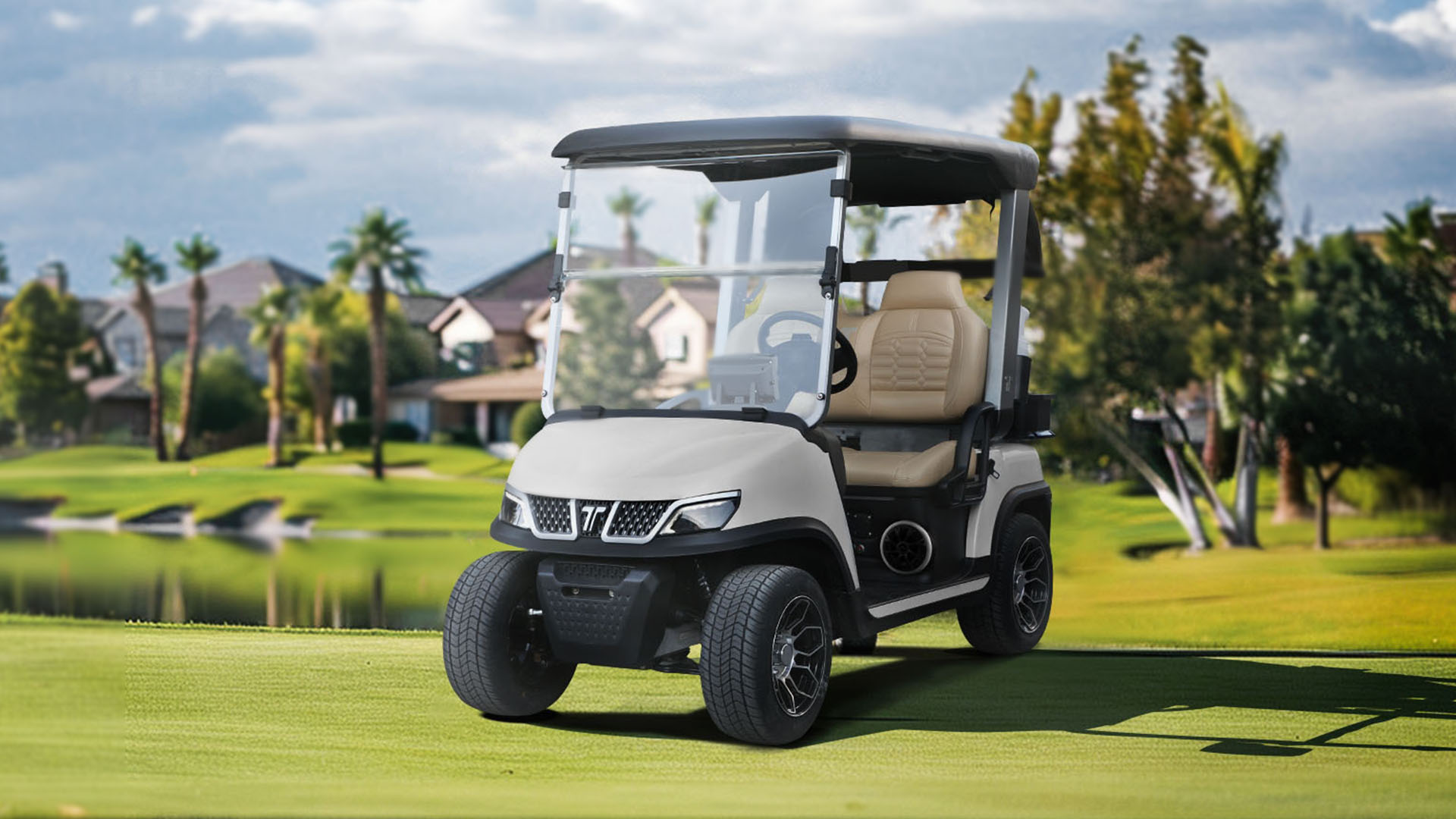
Navigating Country Club Life with Your Own Golf Cart
By 2032, the golf cart market is projected to approach $3 billion. Why? More club members are discovering that a personal cart makes country club life smoother, more social, and—often—more economical. If you’re new to the scene (or just cart-curious), this guide distills what you need to know from the perspective of a former golf professional, membership director, and country club member who owns a cart.
Is a Personal Golf Cart Necessary?
Not necessary—just exceptionally convenient. A personal cart becomes your always-ready transport to the first tee, the clubhouse, or a neighbor’s dinner party. Your clubs can live on the back, your accessories stay packed, and impromptu nine-holes become easy.
Bottom line: carts are fun, customizable, and practical—especially if you play or visit the club frequently.
Country Club Golf Carts: Quick Facts
- New cart price: ~$8,000–$12,000 for basic models; premium builds can exceed $20,000.
- Used market: abundant; entry points from ~$2,000 depending on age/condition.
- Customization: lighting, bag attachments, coolers, sound systems, GPS, enclosures, seat kits—options are extensive.
- Club restrictions: individual clubs set limits on weight, wheel/tire size, color, height, and approved configurations for course use.
- Popular brands: Club Car, Evolution, and Tara are frequent choices among members.
- Common seating: 4-seaters are popular for both course and neighborhood use.
Benefits of Owning a Cart
1) Convenience
Skip the rental counter and head straight to the tee. Keep rain gear, rangefinders, balls, and tees on board—your golf kit is always ready.
2) Neighborhood Mobility
Many club communities embrace carts for short trips. You’ll likely use your car less for around-the-corner errands and casual rides with family.
3) Personalization
Choose colors, upholstery, wheels, storage, and audio to match your style. Add practical upgrades like windshields, coolers, or weather enclosures.
4) Lower Wear on Your Car
Short hops add up. Using the cart reduces mileage and incidental wear on your primary vehicle.
5) Trail Fee Value
Many clubs offer an annual trail fee for personal carts—often $1,000–$3,000 per year for individuals or households. Compare that to rental fees of $25–$35 per person per round to see if unlimited use makes financial sense.
6) Family-Friendly
Carts are a relaxed way to include kids or grandparents—nine holes after dinner, a spin to the marina, or a quick clubhouse visit.
Potential Drawbacks
1) Maintenance Responsibility
Lead-acid batteries require periodic watering, tires need air, and windshields/canopies occasionally need replacement. Overall upkeep is simple—but it exists.
2) Ongoing Costs
Insurance (often $75–$300/year), accessories, routine service, and battery replacement (every few years; ~$700–$2,000 depending on type) should be budgeted.
3) Cart Limits per Group
Many clubs allow a maximum of two carts per foursome. If four players each bring a cart, two may need to park and pair up in the other two.
Cost Breakdown for Owners
| Expense | Description & Estimated Costs |
|---|---|
| Purchase Price | New or used cart. ~$2,000–$25,000 based on age, brand, features. |
| Maintenance | Battery swaps, tires, routine service; modest annual spend, with periodic larger items. |
| Charger (Electric) | Dedicated charger for battery packs. ~$200–$500. |
| Insurance | Liability/damage coverage. ~$75–$300 per year (varies by region). |
| Accessories | Enclosures, windshields, lights, GPS, coolers, audio, seat kits. |
| Storage/Parking | Club or community storage fees (if applicable), especially off-season. |
| Trail Fees | Annual club fee for personal cart course access. ~$500–$2,500+. |
| Registration | Some communities require local registration/licensing. ~$25–$100. |
| Fuel (Gas Carts) | Gasoline for carbureted or EFI models. |
| Tires | Replacement/rotation as they wear. ~$100–$300+ per tire depending on type. |
| Repairs & Service | Unexpected fixes (electrical, suspension, braking, bodywork). |
| Depreciation | Resale value declines with age and use; batteries typically last 4–8 years. |
Electric vs. Gas at Country Clubs
| Electric | Gas | |
|---|---|---|
| Noise | Quiet—great for early/late rounds and neighborhoods. | Audible engine note; some clubs restrict in certain areas. |
| Upkeep | Battery care (watering for lead-acid; minimal for lithium). | Oil changes, filters, fuel system maintenance. |
| Range/Refuel | Charge at home/club; lithium charges faster. | Quick refuel at pump; no charging downtime. |
| Torque/Feel | Instant torque; smooth, linear acceleration. | Strong and familiar throttle response. |
Tip: Check your club’s preferred/allowed configurations before buying.
Trail Fees & On-Course Policies
- Two carts per foursome is a common policy to protect turf and pace of play.
- Path-only days after heavy rain may limit cart access to fairways.
- Inspection/sticker programs verify compliance with club standards (tires, speed governors, lighting, etc.).
Before You Buy: Quick Checklist
- Verify your club’s personal cart policy (allowed models, dimensions, speed limiters, insurance).
- Run a cost-per-round comparison: your rounds × rental fees vs. trail fee + ownership costs.
- Decide on electric vs. gas based on charging access, noise preference, and maintenance comfort.
- Evaluate battery type: lead-acid (lower upfront, more maintenance) vs. lithium (higher upfront, lighter, faster charging).
- Plan storage and charging (outlet availability, ventilation, cable routing).
- Prioritize must-have accessories now; add nice-to-haves later.
Final Thoughts
For many members, a personal cart elevates country club life: faster tee-time launches, more family involvement, and a little everyday joy between home and clubhouse. Run the numbers, confirm your club’s specs, and choose a build that fits how you play and live. Chances are, you’ll wonder how you did the country club thing without one.





Add a review
Your email address will not be published. Required fields are marked *